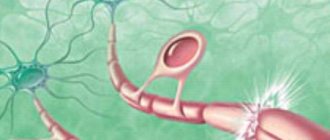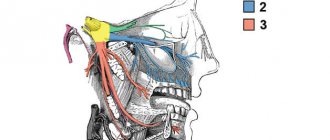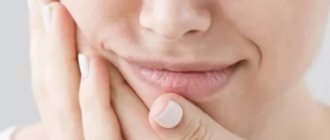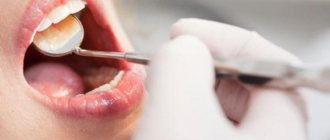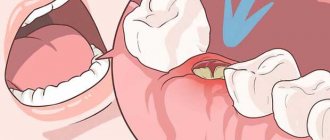- Causes of jaw inflammation
- What to do if the lower jaw is inflamed
- Diagnosis and treatment of jaw inflammation at the dentist
- Features of treatment for older patients
Inflammatory diseases are very common and are presented in all their diversity, from clinical manifestations to localization. Differential diagnosis is not always easy, especially if there are no specific signs. Often a dentist finds himself in this situation when a patient comes to him with inflammation under the jaw on the neck. In this case, it is very important to make a correct diagnosis and prescribe effective treatment.
Causes of jaw inflammation
The lower jaw and the area under it have a rather complex anatomical structure. Muscles, lymphatic and blood vessels, bone structures, etc. are concentrated in this zone. Also, the temporomandibular joint or other anatomical zones may be involved in the inflammatory process, from which the lesion spreads to the neck area. Common causes of inflammation of the jaw are:
- Tooth root cyst.
- Osteitis.
- Inflammation of the lymph nodes.
- Tumors of blood vessels and soft tissues of the neck.
- Traumatic injuries.
- Inflammation of the middle ear.
- Gingivitis, periodontitis, periodontal disease, etc.
Given such a variety of causes, the approach to diagnosis and treatment must be individualized. Due to his ignorance, the patient may choose the wrong doctor and waste his time. In situations where something is inflamed under the jaw on the right or left and at the same time a tooth or temporomandibular joint hurts, you need to consult a dentist. If the pain is localized in the ear area, then you need to visit an ENT specialist.
The best treatment is prevention
Many patients are interested in whether it is possible to get a cold in their teeth if nothing bad has happened before under the same circumstances? It is possible if you have caries, but you did not cure it in time, and as a result, due to hypothermia, inflammation begins and the nerve hurts greatly. From this it becomes clear that it was caries that served as the root cause of subsequent inflammation, and if it had been cured, then a walk in the cold would not have brought any unpleasant surprises.
Pay closer attention to the health of your teeth, brush them thoroughly twice a day and do not forget to use dental floss and mouthwash. All these measures will help you avoid caries and visit the dentist less often, limiting yourself only to routine examinations.
It is important to take care of your health and choose the right clothes based on weather conditions. Severe hypothermia can cause serious illness.
Here are some simple tips to prevent colds in your teeth or facial nerve:
- Dress according to the weather; if it’s winter, don’t forget about warm clothes. Take care of gloves, a scarf and a warm hat, even if you leave the car for a short time. Sometimes a short stay in the cold wind is enough and a visit to the dentist becomes inevitable;
- Do not ignore even small manifestations of caries; a few unpleasant minutes in the dental chair are better than excruciating, incessant pain from a cold nerve. Do not skip preventive examinations with your doctor;
- A responsible attitude to oral hygiene can save you from many possible dental problems and save a lot of money on dental services;
- You can also get inflammation of the dental nerve in the summer when you are in a strong draft, near a working air conditioner or in a cold wind.
Do not forget that sometimes you need to have your teeth professionally cleaned to remove plaque and tartar, which can cause caries.
What to do if the lower jaw is inflamed
First of all, it is important to identify the symptoms of the problem. One of the very first and most obvious is an increase in soft tissue volume.
This can be either a slight swelling or a very large tumor-like formation. Other symptoms may include:
- Increased body temperature.
- Redness of the skin.
- Painful sensations.
- Incomplete opening or closing of the jaw.
- Sensation of a foreign body in the throat.
- Difficulty chewing or swallowing.
- Hearing loss.
If the symptoms are confusing and it becomes unclear which doctor you need to see, you can make an appointment with a therapist who will conduct an initial examination, examine the complaints and issue a referral to the right specialist.
Symptoms of trigeminal neuralgia
Pain is noted in the area of innervation of one or more sensory branches of the trigeminal nerve, most often the maxillary. The pain is paroxysmal, lasting from a few seconds to 2 minutes, but attacks can quickly recur. The pain is shooting, excruciating, often disabling, and is often triggered by touching trigger points on the face or movements (for example, chewing, brushing teeth, or smiling). Often the patient cannot sleep on the affected side of the face; on average, the attack lasts up to 3 minutes; in about 7% of patients it lasts up to 3 days. Their number can reach 200 per day.
Over time, the pain progresses and may be constant, without intervals. The effectiveness of medications that relieve pain decreases and the patient can no longer control the pain. It becomes exhausting for him. Patients may withdraw from social contacts and daily activities for fear of pain returning.
Pain from trigeminal neuralgia can be observed in different parts of the face. It all depends on which branch of the nerve was affected, if the maxillary - in the area of the facial muscles, upper jaw and nose, the mandibular - the pain will resemble a toothache, the ocular - in the area of the temples, forehead and above the eyebrows. Other characteristic symptoms of inflammation of the trigeminal nerve: spasms of the facial muscles; increased salivation; increased or decreased sensitivity of facial skin; moderate increase in temperature; weakness and muscle pain.
Diagnosis and treatment of jaw inflammation at the dentist in Odintsovo
If inflammation of the jaw has developed due to diseases such as pulpitis, periodontitis, periodontitis, as well as as a result of injuries and damage to the temporomandibular joint, then the treatment will be carried out by a dentist. First, a specialist must establish an accurate diagnosis. To do this, he collects anamnesis, finds out complaints, and conducts a visual examination of the oral cavity. Additionally, an X-ray examination of the jaws, laboratory tests and other diagnostic tests may be prescribed, with the help of which it will be possible to obtain objective information about the condition of the patient’s dental system.
Treatment of inflammation in our clinic in Odintsovo is usually carried out using combined methods, which include:
- Conservative therapy. Typically, the dentist prescribes antibacterial, anti-inflammatory and painkillers.
- Surgery. It involves the removal of non-viable tissue, drainage of the inflammatory focus and, if necessary, other procedures that are aimed at eliminating the pathological area.
The duration and complexity of treatment largely depends on the degree of neglect of the process. The sooner a patient seeks medical help, the easier it will be to restore lost health.
Pain that comes with a draft - how to treat it?
More often, pain of this kind appears against the background of pre-existing pathologies or diseases of the spine and joints. The body, weakened by existing diseases, becomes vulnerable and is easily susceptible to new diseases. However, even many healthy people are familiar with the concept of “drafty air” - this is the result of a sharp temperature change. Most often, such pain is caused by myositis, an inflammation of the skeletal muscles. Myositis is divided into many types based on various characteristics.
Causes
Cervical myositis is inflammation in the muscles of the neck and shoulder. It occurs suddenly, and the main reasons for its appearance are:
- hypothermia (sharp temperature change from warm to cold);
- uncomfortable sleeping position;
- uncomfortable body position for a long period, for example, during work;
- weakened immunity after/during viral diseases.
What are the symptoms of the disease
The main symptom is localized muscle pain, which may worsen with movement, changes in temperature or weather. As a rule, such pain occurs only on one side of the neck and can spread from the head towards the lower back. At an early stage, it may manifest itself as an increase in temperature.
Without proper treatment, myositis can progress and cause complete or partial atrophy of skeletal muscles. It can also spread, affecting neighboring muscle groups, in particular, cervical myositis can affect the muscles of the larynx, pharynx, esophagus and even the respiratory muscles, resulting in difficulty swallowing food, coughing, and shortness of breath.
Inflammation of the muscles of the cervicobrachial region is characterized by the following symptoms:
- Unilaterally located pain that extends to the arm and/or interscapular area.
- Severe tension in damaged muscles.
- Low mobility of inflamed muscle groups.
- Numbness of the affected muscles.
How will the therapy work?
The general practitioner will give a referral to a neurologist, who in turn will determine the course of treatment, which may include recommendations such as:
- rest for the affected muscle area;
- warming and anti-inflammatory ointments;
- “gentle” course of physiotherapy;
- spine massage
; - magnetotherapy.
Basically, all actions are aimed at relieving inflammation, increasing immunity and getting rid of the symptoms of the disease. In severe cases, in order to avoid muscle spasms, reduce swelling and pain, the doctor may prescribe a novocaine blockade.
Some doctors also recommend manual therapy to relax the muscles and speed up recovery.
Pre-medical treatment
It is not always possible for a sick person to immediately consult a doctor for qualified help. And what to do if this is not possible?
To relieve pain, you can take a painkiller, preferably with an anti-inflammatory effect. It is best to use non-steroidal anti-inflammatory drugs.
You can also warm the area where the pain is felt with “dry heat,” which is also recommended by doctors. To do this, use a frying pan to heat regular table salt on the stove; when it is hot enough, pour it into a towel and, carefully wrap it, apply it to the source of pain.
You can use warming patches - they need to be stuck on the desired area for a long period of time, or use mustard plaster - it will be enough to hold it for about 10-15 minutes.
Alcohol-based rubs are also effective.
Diet to restore the body
Any inflammatory process in the body entails many unpleasant consequences. To minimize damage to the body due to inflammation, it is recommended to follow a diet that will help neutralize the accumulation of harmful substances in the muscles. These are vegetables, fruits and berries that will give the body the necessary vitamins.
Fatty acids contained in sea fish reduce and stop inflammation.
In addition, the cause of spasms may be a lack of magnesium, calcium or zinc, which are found in cereals, cereals, dairy, fermented milk products, liver, and raw meat, respectively.
Easily digestible proteins and salicylates help with myositis. They contain soy, chicken, almonds, beets, carrots, etc.
These foods should be eaten daily. It is also recommended to drink at least two liters of liquid daily: water, green tea, compotes or vitamin decoctions. As with many any diseases, salty, fatty and alcohol-containing foods can negatively affect the patient’s condition.
Prevention
The main preventive measures to protect against this disease coincide with the prevention of spinal diseases.
It is worth paying attention to light warm-up and exercises, especially for people with sedentary work. Try to avoid muscle overstrain when performing heavy physical exercises and physical activity. Doctors also recommend monitoring your posture and engaging in sports such as gymnastics, swimming and cycling.
Avoid contracting viral infections, and in case of infection, do not advance the disease and consult a doctor promptly. Do not tolerate diseases “on your feet” - this can lead to serious complications.
One of the main factors of prevention, as with most diseases, is nutrition.
The risks of contracting a disease are reduced when the body receives all the necessary substances and microelements, so the main recommendation of doctors is always a healthy diet. And the main advice is to avoid, if possible, drafts and muscle hypothermia. Author: K.M.N., Academician of the Russian Academy of Medical Sciences M.A. Bobyr
Features of treatment for older patients
Among the common age-related changes in the lower jaw, changes in the content of water, organic and inorganic substances are noted, osteoporosis, atrophy and thinning of bone tissue are often detected. In addition, older patients often have concomitant diseases, such as diabetes. All of these factors can greatly limit treatment options. For example, if dentures are required, then in some situations the dentist may only offer removable dentures. Placing implants will be risky and ineffective.
Nevertheless, modern dental capabilities make it possible to find a way out of any, even the most difficult situation. A wide variety of materials and techniques can eliminate existing problems and significantly improve the patient’s quality of life.
Diagnostics
As a rule, the diagnosis is made based on the patient's complaints and examination data. Almost all patients with trigeminal neuralgia undergo magnetic resonance imaging of the brain at some stage to rule out a tumor or multiple sclerosis. In addition to computer and magnetic resonance therapy, radiography of the paranasal sinuses is used to identify chronic inflammatory and other pathological processes; OPTG (orthopantomogram) to assess the width of the bone canals.
The patient requires consultation with several specialists: an ENT doctor, a dentist, a neurologist. A preliminary diagnosis can be made by a neurologist based on the patient’s complaints, studying the history of his disease and an objective examination of the face with an assessment of symmetry at rest and when trying to smile.
Over time, symptoms of inflammation of the trigeminal nerve can give rise to neuropathic complications and lead to the development of secondary pain syndrome. In the chronic form of the disease, the auditory and facial nerves are irritated. Without treatment, trigeminal neuralgia can lead to more serious complications, such as dystrophy of the masticatory muscles; decreased sensitivity of the affected area; synkinesis (cooperative movements in which one nerve controls many muscles); contracture and spontaneous contraction of the facial muscles; chronic lacrimation.
Causes and risk factors
Neuralgia of the trigeminal nerve branch is a disease with many possible causes. First of all, this is compression by vessels: displaced arteries or veins. Inflammation can also be provoked by metabolic disorders and diseases that are associated with them. These are diabetes mellitus, gout and other similar pathologies.
There are other possible causes of trigeminal neuralgia:
- inflammations that occur during dental treatment;
- hypothermia (general or facial area);
- mental disorders;
- purulent diseases of the jaw bones or skull;
- infection of the body with worms;
- chronic caries or sinusitis;
- infectious and viral diseases (herpes, adenoviruses, mumps, pulmonary tuberculosis, herpes zoster);
- very severe allergies;
- brain tumors;
- inflammation of the outer, middle or inner ear;
- multiple sclerosis;
- too narrow canal of the facial nerve from birth;
- injuries or operations on the temporal bone.
Home remedies
Before treating trigeminal neuralgia at home, you should consult a doctor, since many remedies can only worsen the situation. If the specialist allows it, it is also possible to use various home recipes.
According to recommendations for trigeminal neuralgia, it is worth consuming orally or lubricating the affected side with birch sap. You need to drink 4-5 glasses per day. Heated buckwheat folded in cotton cloth will help relieve pain. The compress is made 2 times a day, keeping it at the site of inflammation until it cools down. At home, it is useful to massage the sore area: rub, stroke and lightly knead the area of inflammation.

